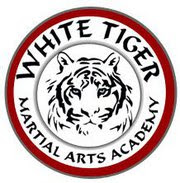Kihon kata
The basic kata. Teaches one step, one block and one strike. Also how to turn. The heian katas, and many other Shorin katas, are based on this basic pattern.
Heian
Called Pinan on Okinawa. Heian means "Peaceful mind", meaning that somebody who has perfected this series of 5 kata has a complete Self defence system and can protect themselves confidently.
Tekki
Called Naihinchi on Okinawa, as they were performed in the Naihinchi stance. Tekki are all performed in the Kiba Dachi horse stance. There are 3 Tekki kata, Tekki Shodan being the first you learn. They are strong Shorei kata.
Tekki means "Victory". Funakoshi was told by his teacher that they are the easiest and the hardest to learn. He spent 3 years learning each kata, spending a decade on the Tekki series alone. Like Heian, Tekki is almost a MA in it's own right.
Bassai
Called passai on Okinawa. Another Shorin kata, based on the moves of heian, specifically heian godan. A powerful combat kata meaning "to storm a fortress".
Bassai Dai is the second of the two bassai kata, but the first you learn.
Kanku
Called Kushanku on Okinawa after the Chinese fighting monk who introduced it to the island.
Kanku means "to look at the sky".
A Shorin kata, again based on the Heians, primarily Yondan and Nidan.
Jion
A powerful Shotokan kata that makes up a series with Heian Godan and the two Bassai.
At STMA this is the black belt kata
Jitte
The favourite kata of Master Enoeda. Meaning "10 Hands" - the person who has perfected this kata can successfully defend himself against 5 opponents.
This is the 2nd dan kata.
Taikyoku
Taikyoku refers to the singularity before the split into Ying and Yang polarity. It means harmony with the Universe, the goal of Zen.
Taikyoku Shodan is actually the Kihon Kata. However, practiced at black belt level it takes on a whole new meaning as basic technique becomes advanced technique.
The difference between a white belt doing Kihon kata and a black belt doing Taikyoku Shodan will be obvious to any observer.
A set of 3 kata.
Taikyoku Nidan introduces the high punch.
Taikyoku Sandan introduces the back stance and middle block.
On Okinawa, students learn the 3 taikyoku before the Pinans.
In STMA it's not until you get to black belt that you learn the other two Taikyoku.
You now have a greater appreciation of the Heians - they are no longer just some katas you did to get your first few belts.
The 3 Taikyokus and Heian Shodan make a nice series of 4.
H Ni to Go also makes a nice series of 4.
For 3rd dan there is no set kata or grading as such.
However you need to learn the next 2 Taikyoku, so you have all three, the next two tekki, so you have all three, and the next Bassai and Kanku. This fleshes out your understanding.
You then learn Ji'in, a Shorin kata based on Jion and Jitte, that makes a set of 3.
With Heian Godan, the Bassais, and the Jis, you have powerful set of 6 kata to perform.
Also, it's not just a case of knowing these kata, it's being able to break them down, perform the bunkai and teach them.
At 3rd dan you are awarded the title "Sensei" and the right to teach and grade your own students.
It is not something given away lightly, it as to be earned!
You now have the following kata:
3 Taikyoku
5 Heian
3 Tekki
2 Bassai
2 Kanku
Jion, Jitte and Jion
The next kata you learn are Enpi and Hangetsu.
Enpi is a Shorin kata, while Hangetsu is a strong Shorei kata.
You now have a total of 20 kata.
This is around the level we would look to promote you to 4th dan and award the title of Renshi
There are now 10 more kata we practice that you can learn over your progressive years in black belt training, if you wish:
Chinte, Gankaku, Meikyo, Seienchin, Wankan
Unsu, Nijushisho, Sochin, Gojushiho Dai, Gojushiho Sho
This makes a total of 30 Karate-Do Kata.
The Shorin katas are lighter and faster and suited for a smaller person, or people who like kicking.
This fighting style includes freestyle karate, semi contact, Lau Gar, TKD, largo mano.
The Shorei katas are heavier and stronger and suited for a larger person, or those who like to get stuck in.
This fighting style includes boxing, Thai boxing, FC KB, Judo, Wrestling, Krabi.
In sporting terms, Shorin is football and Shorei is rugby.
The katas are split between Shorin and Shorei.
Shorin includes:
3 Taikyoku
5 Heians
2 Kanku
Enpi
Shorei includes:
3 Tekkis
2 Bassai
Jion
Jitte
Ji'in
Hangetsu
So by the time you have done the first 20 kata, at 3rd dan, you will have 11 Shorin kata and 9 Shorei, a good mix.
